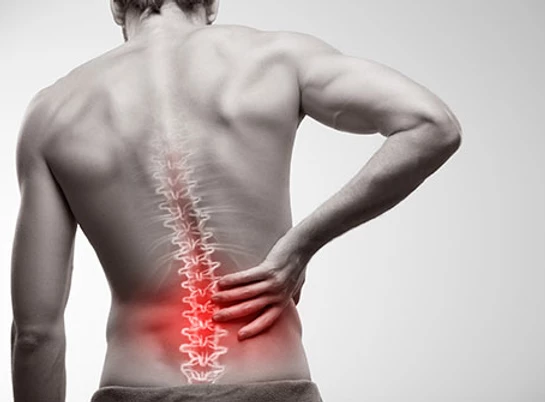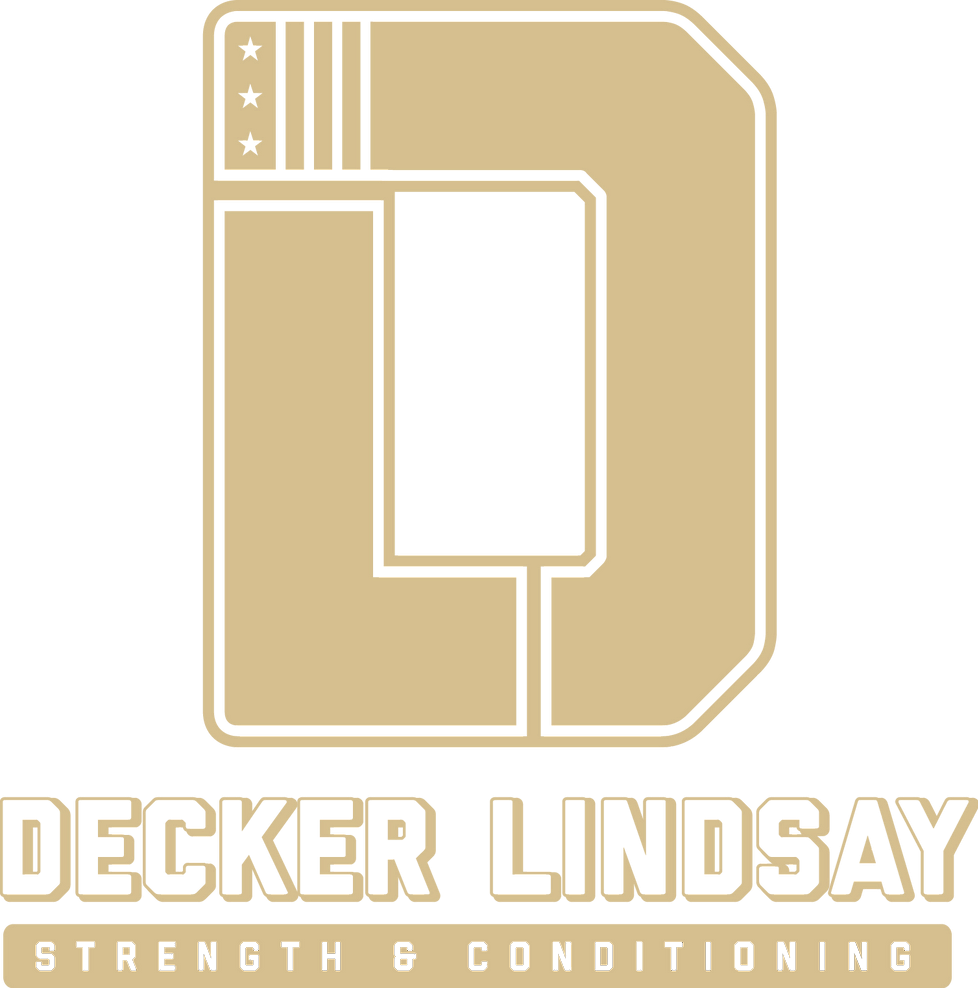
3 Exercises to Eliminate Low Back Pain
“My low back is killing me.” This is something we hear all too often and it’s no surprise, considering that 80% of the population has experienced low back pain at some point in their life. What I find even more alarming than that statistic, is that it is rarely ever addressed and often believed to be an inevitable part of being active. You might do a few stretches here and there, maybe take a little break from training, but it never seems to fully go away. Unwillingly, most people do their best to just deal with it.
When we are talking about low back pain what we’re really dealing with is an imbalance of compression between the anterior (front) and posterior (back) aspects of the core. The lumbar spine has become compressed, while the rib cage and pelvis have moved away from each other. Logically, the best plan of action to manage this pain is to redistribute these levels of compression more evenly and create a better alignment of the rib cage and pelvis. But how can we accomplish this?
First things first – YOU ABSOLUTELY HAVE TO LEARN HOW TO FULLY EXHALE. If there is nothing else you take away from this article it should be this. Getting the rib cage stacked on top of the pelvis is the name of the game and it’s going to take some serious effort. We need to recruit the big guns – the obliques. Your obliques take up the most real estate on the ribcage and pelvis in comparison to rest of your abdominal muscles so you need to strengthen them like hell if you want to draw those ribs back down and alleviate your pain. The only way to do this is through FULL DEEP EXHALATION. Don’t believe me? Lie on your back with your hands on your ribs. Take a calm breath in through your nose and then exhale as if you are going to get a million dollars for every CC of air you get out through your mouth (this should take about 8-10 seconds). Your abs should be on fire. Feel the way your ribs have been drawn down closer to and more inline with your pelvis. This is the type of anterior compression we need to help us get out of persistent low back pain.
We’ve already discussed the upper half and how we can influence it to help alleviate our pain, so what about the lower half? Many of us have heard the phrase “anterior pelvic tilt” or at the very least have seen someone with an extremely arched low back and hips. For those of you who are not familiar, anterior pelvic tilt occurs when the pelvis is excessively tipped forward. Now I am not convinced that anterior pelvic tilt or any posture pattern is inherently bad. In fact, some of the best athletes I work with have a large degree of it. However, I am convinced that if you are stuck in one posture pattern, unable to find a more neutral (evenly compressed) position, you may start to have some problems. In regards to the pelvis, the muscle you are going to need to target is the hamstrings (more specifically the medial hamstrings). The hamstrings work to posteriorly tilt, or tuck, the pelvis. This will help take stress off of your low back and keep you pain free long term.
Listed below are a few exercises that integrate all of these concepts. Give each one a try and watch your low back pain drastically improve.
Lat Hang
The lat hang is a small twist on an exercise that I’m sure many of you have done or seen before. Hanging has long been claimed to have a variety of health benefits and for good reason. In this case we’re using this exercise to “turn off” the latissimus dorsi, or lats. The lats extend the ribcage and thoracic spine so if our goal is to draw those ribs down and create some anterior compression, we need to do all we can to get them to relax. Incorporating a lat stretch with some controlled breathing is just what we need to do the trick.
- Find a sturdy bar to hang from
- Grab the bar with both hands shoulder width apart
- Elevate your feet so that your knees are slightly below hip height
- Place a small ball between your knees to squeeze
- Tuck your hips to feel your hamstrings engage
- Inhale calmly through your nose
- Exhale fully and pause for 3 seconds
- Repeat 4-5 times
- Using a balloon is preferred
GHR ISO Hold with Reach
The GHR is commonly used by strength and conditioning professionals due to the belief that it has carryover to sprinting, but there are a few key components that make this piece of equipment a great option for low back health. For one, it can be used isometrically (the muscle is contracting without lengthening or shortening), which is how we’re going to use it in this variation. Now, instead of worrying about repetitions we can challenge our ability to maintain the exact position we want, while incorporating a better, more controlled breathing strategy. Another big upside of this movement is that it incorporates reaching. Reaching helps to draw the ribs back while driving some healthy movement of the shoulder blades. Incorporating reach is typically an afterthought in many strength and conditioning programs but its importance in low back and shoulder health cannot be overstated. All in all, there are a lot of moving parts to this exercise making it extremely challenging, but if you can master it, it will do wonders for your low back.
- Position yourself on the GHR so that your knees are bent around 90 degrees
- Press your heels into the machine and tuck your hips to feel your hamstrings engage
- Reach with both arms and round your upper back (a cue I like to use is “make your fingers as long as possible”)
- Lean forward slightly and maintain this position throughout the entire exercise
- Inhale calmly through your nose and feel your upper back expand with air
- Exhale fully to feel your abs engage and pause for 3 seconds
- Repeat for 4-5 breaths
If you don’t have a GHR available at your gym, the hooklying tilt with overhead reach is a really good alternative. It uses similar concepts and can be done without any major equipment.
- Lie on the floor with your feet flat and knees bent
- Press your low back into the floor
- Press your heels into the floor and tuck your hips to feel your hamstrings engage
- Reach slightly backwards with both arms
- Inhale calmly through your nose
- Exhale fully while reaching as far as you can to feel your abs engage and pause for 3 seconds
- Repeat for 4-5 breaths
Dead Bugs
Dead Bugs are a staple in nearly all of my programs. They’re easy to coach, easy to progress, and easy to feel the right muscles working. Getting the ribs and pelvis to align is awesome, but it’s a useless strategy unless the alignment can be maintained while the upper and lower limbs are moving. Dead Bugs allow us to challenge this concept directly, in a variety of different positions.
- Lie on your back with your arms reaching straight up, knees bent to 90 degrees, and feet in the air
- Press your low back into the floor to feel your abs engage
- Inhale calmly through your nose
- Simultaneously lower your opposite arm and opposite leg
- Maintain the position of your low back on the floor and exhale as you lower both limbs
- Repeat 4-6 times on each side
If you’re having trouble keeping your low back on the floor, try this plate hold variation.
- Lie on your back with your arms reaching straight up, holding a plate over your chest
- Bend your knees to 90 degrees with your feet in the air
- Press your low back into the floor to feel your abs engage
- Inhale calmly through your nose
- Maintain the position of your low back on the floor and exhale as you lower one leg
- Repeat 4-6 times on each side
Low back pain is an extremely complex topic, but these exercises are a great starting point for anyone looking to manage their pain and continue training. Whether you’re a high level athlete, lifter, or work a desk job all day, these exercises will benefit you. Make sure to perform them regularly and you’ll be amazed at the way your back pain subsides.

